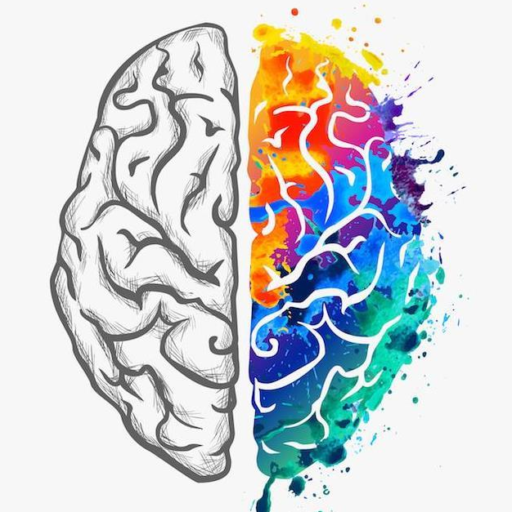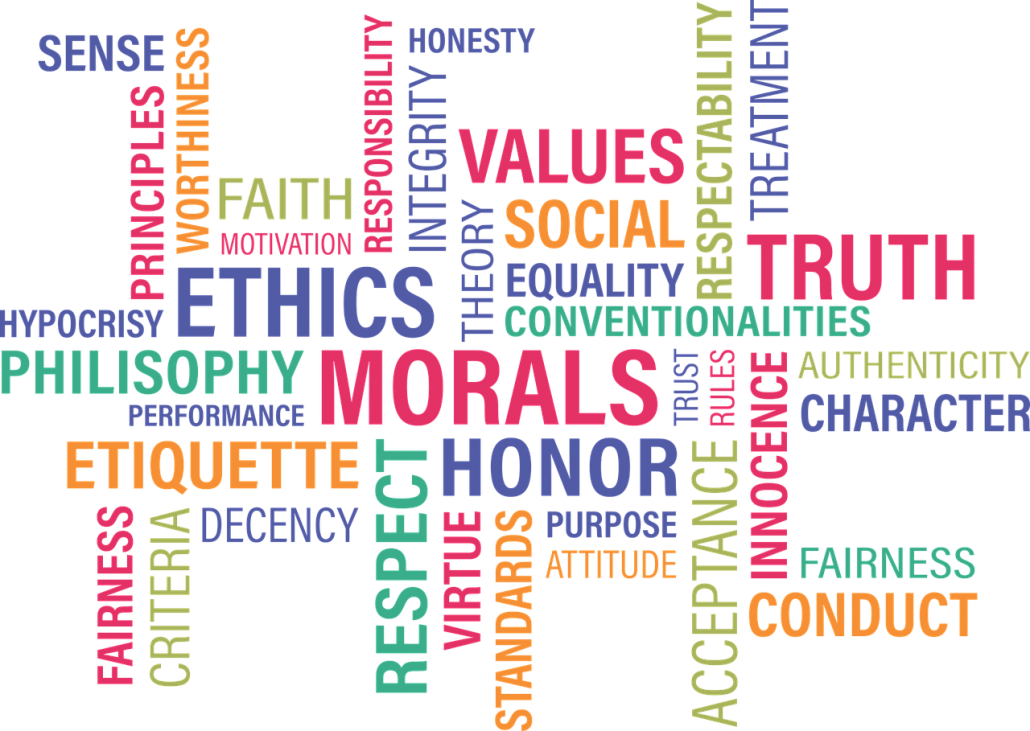Here is an idea that has been dwelling in my mind for a long time now. I remember learning about values and how to create a value centered life. It made so much sense to me but what confused me was the different kind of values that exist. I realized that there are two main categories of values, or at least in my opinion. These are called moral values and lifestyle values. It is important to choose values based on what is immediate and in our control and what we actually see as important to us in our lives. When choosing values we most resonate with, we automatically have to reject other values that don’t suite us anymore. Then the tough journey of implementing these values begin, where we consciously have to choose to act on them and it is not always easy to do so, but it is absolutely worth it in order to grow into the person you want to become. Before we explore the value-island idea, we must first understand what is meant by values.
Moral values:
These are the values that drive our behavior and through which we make our decisions for example, honesty, loyalty, authenticity, love, humility, fairness, vulnerability etc. What is great about these values are that they are in our control and immediate. Choosing these values can be a process and is not done over night. As your life continues, these values might change based on the lessons that you learn over time. A great example of this, based on my own life experience, is that I used to value “being like” by everyone, and still do to some degree, but I try to be aware of when it happens then actively choose not to indulge in this poorly chosen value. This is a silly value because it is not immediate and not in my control. Choosing “being liked” as a value is bad, because you keep on adapting to the values of other people and by doing so, you are not rooted in your own values and therefore not standing for anything. It is like being a feather in the opening scene of Forest Gump, where the wind is blowing around the feather in all kinds of directions and the feather not having any control over it. Other poorly chosen values are being popular, being right all the time, being perfect, seeking other’s approval, etc. What they all have in common is they are not in our control and therefore not solid and immediate.
Lifestyle values:
Lifestyle values are what we value doing and what we need in order to feel balanced and satisfied. In other words doing things that we deem as important and meaningful and how we choose to spend our precious time, which if you forgot, is running out everyday, second-by-second. There are so many lifestyle values, here are only a few examples, do you value creativity, health, your career, family and friends, finding a compatible partner, having kids, being rich etc. Knowing what you like doing and spending your time on, is great because YOU control how you want to spend your time. If you value creative expression, for example playing a musical instrument, drawing, writing etc. and you actually do it, will then add meaning to your life. If you value family connection, then by making time to connect with your loved ones, you spend your time on something you really like doing and therefore you will experience some kind of life satisfaction. Everyone has their own unique lifestyle values and it will be different for almost everyone. There are no right and wrong values, because everyone’s needs are different, as long as it doesn’t negatively influence others and is done with integrity. These are the “death bed” kind of values where you ask yourself the question, ” when I am lying on my death bed one day, what is it that I want to remember?”. Do you want to be the person with regrets and “if only I…..” or do you want to be the person who can honestly say, I failed at many things , but have no regrets because I did what I valued and I lived my life on my terms. Let this scenario guide you when choosing your lifestyle values.
The value-island idea:
I see everyone’s life as an Island. These islands are all inter-connected by bridges and the water itself, because we can reach each other by boat, so to speak. In order for an island to function properly it needs to know the values that govern it and where and what its boundaries are. In other words we need to know our own moral and lifestyle values and we need to know and set boundaries in order to protect the prosperity of our island. Meaning we need to know what we stand for and protect it. Your moral values are the foundation and oxygen of your Island and it is what is needed to keep your island from going under water and drowning. If moral values are the foundation, then lifestyle values are the provinces of your island. We need to actively develop these provinces by building infrastructure that best suits our vision. In other words we need to make time to frequently travel to these different provinces and spend time doing what we value in order for the infrastructure to develop. The more things we value, the more and smaller the provinces will be and the less time we get to spend in a particular province, so choose your lifestyle values carefully. Not all provinces carry equal weight or space, that means that our values are hierarchical in nature and we attach a certain level of importance to each value. These provinces are not set in stone and permanent because as our lives continue, we adopt different interests and loose attraction to others. The boundaries are of utmost importance because it keeps unwanted visitors out and lets you choose the things and people you want to give access to your precious paradise. Some people are permanent residents and others only visitors, so know the difference. In other words, you need to know your boundaries and make sure to stand up for yourself and what you believe in and see as valuable.
How to start creating your own value-island:
Step 1: “Nothing can be build on a weak foundation”
Before you can build your provinces, you need to lay out a solid foundation of moral values. To discover your moral values, ask yourself, “what kind of person would I like to be and how do I want to interact with the outside world?”. Another way you can find what you value is by asking yourself, “Who is my role-model and why? What characteristics does this person have and how does this person deal with challenging situations?”. Once you are aware of these values, you can continue to the next step.
Step 2: “Ask not what the world needs, but rather ask what makes you come alive, because what the world needs are more people that becomes alive”
After we established and built our foundation, we can now create our island’s provinces, so we can now ask ourselves, “what do I love doing and what makes me feel like I am alive?”. Another way is to do the “death bed” exercise mentioned earlier. Ask yourself, “when on my death bed one day, what is it I want to remember spending time on doing?”. In other words what is important to you, not what you think others will see as important, but what really floats your boat? Make a list of these thing.
Step 3: “Boundaries are life fences; they keep out what you don’t want and protect what you value”
Now that we have our foundation and started developing our provinces, we can now start to set up our boundaries that we need to protect our vision and values. Two kinds of boundaries are important in my opinion, boundaries to self and boundaries to others. To find out what your self-boundaries are, ask yourself, “what behaviors and actions will I not tolerate from myself?”. An example is, if you value loyalty, the boundary might be to not pursue someone else and betray your partner. These boundaries are geared to govern your life and help you become the person you know you can be. It is to keep yourself in check and to actively choose to behave in such a way that you can feel proud of yourself and walk with your head held high. It serves as your inner compass, so to speak.
The second type of boundaries we need to set is other-people-boundaries. We can ask ourselves, “what will I and won’t I tolerate form others?”. This can be for example respect. If someone treats you in a way that is disrespectfully or that makes you feel uncomfortable, you have the right to speak up for yourself or if someone wants you to do something you really don’t like to do, say NO, and mean it. It is to choose who you will allow access to your island and guess what, it is your choice and your choice ONLY! Now make a list of things that you will not tolerate from yourself and others.
Remember NO ONE is perfect and you WILL make mistakes along the way, you will slip and go against your values sometimes, you will be disappointed in yourself at times, that is part of being human. We have to then be vulnerable and own up to our mistakes and take responsibility for for our actions. BUT we have to do it through the lens of self-compassion. The secret here is not how perfectly you can manage your value system, but rather how often you can make the wise choices. The more you make the wise decisions, the more self-esteem and self-respect you will develop and that carries over into self-confidence.
Step 4: “Know thyself”
There is no greater power than knowing yourself and understanding your strengths and challenges. To find out what your strengths and challenges are, I suggest, doing the MBTI personality test and asking yourself and your closest confidants, honestly, what they think you excel at and what are your weaker traits. I know taking criticism sucks more than having diarrhea, but hey, what doesn’t kill you makes you stronger. List your strengths and challenges and make sure to be aware of them when the right or, not-so-right situation might arrive.
Now you can put it all together on one A3 or A2 poster and put it up where you can review it everyday, preferably in the morning before your day starts as a reminder of what you value, how you can consciously structure your time to travel from province to province on a regular basis and what you will tolerate and will not tolerate from yourself and others.
If you are not sure how to structure it, download the FREE template down below and start creating YOUR value-island today!
If you found this exercise meaningful, please share it with your loved one’s and others that might benefit from it.
Thank you for reading, until next time.




